Home › Projects › White Book › The future of digitalized mobility
The future of digitalized mobility

Dr. Jochen Eickholt, CEO Division Mobility, Siemens AG, describes his vision for urban mobility in 2050 and how we get there.
To a large extent, the sustainable development of our economies and our societies will depend on the sustainable development of our cities. Already today, over half of the global population lives in large urban centers. Cities account for around 80 percent of the world’s economic output and drive an even higher share of global growth. And they are projected to grow even faster: according to current forecasts, in only 15 years from now, almost 60 percent of humanity will live in urban centers. That figure is expected to reach 70 percent by 2050, and as many people will live in cities as inhabit our entire planet today.
In a globalized economy where businesses are increasingly able to relocate resources and workforces, cities will be the communication centers – as engineers we could call them switchboards – in which these exchanges are negotiated and implemented. Cities will seek to attract the best people by providing the most appealing environment for economic activities. And those with a clear vision and concept for a successful future will seek to cooperate with others, just as successful cities have always done, such as the centers located along the ancient Silk Road in Asia. Communication has always been a key to success.
And communication will remain essential as our globalized economy and its enormous economic opportunities are driven by the “digital natives” who have begun to flood workforces in the industrialized nations. These natives are the people who have grown up embedded in globalized communication tools such as Facebook, Twitter, or Snapchat that connect them with each other, no matter where they live or work. They will be the ones to implement the digital leap experienced in their private lives in all aspects of our economy and realize unprecedented efficiencies by merging the real and the virtual worlds.
As a result, things will communicate globally just like people do. Machines will talk with each other over the Internet; sensors and actuators in gas turbines or factories collect data, monitor conditions, automate functions and optimize processes by utilizing the possibilities of the digital twin as well as consistent data models. Advanced algorithms, high-powered computing, extreme connectivity and cloud storage all facilitate the emergence of smart systems.
The situation will be no different in transportation. In fact, the transportation sector could well lead this development. For as the MIR initiative has rightly pointed out, “social mobility, security and economic upliftment find their base on transportation mobility and presence of infrastructure and communications permitting the fast passage of people, goods and ideas.” Transportation will become digitalized and increasingly automated – a process in which Siemens is already actively engaged. We believe that, as engineers, it is our job to apply our technical skills, our abilities, our experience and our ingenuity to improve the lives of the people that use our products.
As the global market leader for highly or fully automated mass transit solutions, we are focusing on the enormous opportunities offered by the digitalization of our transportation systems, and are working to make mobility more efficient, more attractive and more convenient both within and between urban centers. As a result of our research and activities, we believe a picture is emerging of what digitized mobility will look like in the year 2050.
The key feature of this picture is that all driving will be autonomous and governed by intelligent systems. For rail transport, this means that all train movements will be fully automated and drivers will no longer be required. On our roads, traffic flows will be managed by intelligently networked streets and roads and by distributed control centers. For low-density traffic, in particular, vehicles will connect in larger groups operate as a unit over longer distances. Seamless intermodal traffic will be standard; we all will be able to switch easily and quickly from one mode of transportation to another.
Three main benefits will emerge from these developments. First, safety levels will improve dramatically for high- and low-density road traffic. Second, energy consumption will be reduced, and transportation will become greener and far more ecofriendly. And third, transport capacities and flexibility will be increased substantially. In short, we will be able to transport more people and more goods with greater efficiency.
To some, at least some parts of this picture will look unfamiliar. But in fact, we are moving far faster than one might suspect toward implementing each of its elements.
Interestingly, autonomous systems for rail operations are far more mature and advanced than those being designed for road traffic. The reason is that digitalized rail technologies already offer very clear advantages to commuters and travelers, especially in urban areas. Rail operators clearly know and appreciate these advantages and are working closely with us to improve their transport services in and between cities throughout the world.
I would like to highlight three of these advantages in particular.
First of all and most visibly for commuters and travelers, digitalized technologies improve the travel experience and comfort of passengers. Real-time connections appear live on monitors; train destinations are displayed inside and outside the trains; and fares can be collected via smartphone apps, even when different modes of transportation or different operators are used. Also, traveling will become safer. With the help of video-based monitoring functions, anoperator can quickly spot problems in the vehicles or on the rail line in real time and take the appropriate measures. Likewise, onboard and outside cameras can recognize dangerous situations and prompt action. And onboard Internet will of course be a standard feature. By rail – and on the road – passengers and vehicle operators alike will enjoy greater safety, comfort and convenience.
Second, digitalized technologies increase the availability of an operator’s rolling stock and transport system. Using our smart data analytics for infrastructure and service, we can now predict and prevent failures even before they occur. The key to this is using the enormous amounts of data generated by our products and systems. Each year, for instance, a fleet of 100 commuter trains delivers 50 million diagnostic messages, up to 100 billion field records, and between 5 and 200 billion cyclical records, depending on the sample rate. Using sophisticated algorithms developed by our IT engineers, we then analyze this data to detect patterns and trends in the performance of our products. We model the physical degradation of parts, analyze event sequences, identify abnormality patterns, and monitor the individual components of our products. Before too long, smart data analytics will enable us to guarantee our customers 99.9 percent availability of their trains.
And third, digitalized technologies increase throughput and enable a system to move more people and more goods on existing infrastructure. This works in what we call “closed systems,” where there are no competing traffic flows and only one type of train operation on the same track. For instance, we have supplied the Paris Metro with a driverless system for its oldest and most heavily used line. This system is operated with our communication-based train control system together with automated train operation. In this manner, we increased the line’s capacity during peak periods by 20 percent, allowing Parisians to get to and from work with less stress and greater convenience.
In an even more exciting development, digitalized technology is also helping us increase throughput in so-called “semi-closed systems,” where more than one type of operation is performed on the same track. In the case of Nuremberg, Germany, automated trains share the metro infrastructure with our driver-based trains. The driverless system works with a punctuality of 99 percent, and has increased the line’s capacity by 50 percent. In addition, it is highly flexible, since additional trains can be deployed and automatically sent into operation straight from the depot.
It is especially convenient that increases in capacity and throughput go hand in hand with substantial energy savings. In both Paris and Nuremberg, our system saves the operators – and the environment! – no less than 15 percent of the consumed energy. And just as appealing is the fact that automated rail transport is safer, since it eliminates the risks of human errors – that have again led to a rail tragedy in the recent past in Germany – by operating the trains automatically and safely.
Even more challenging is the operation of fully automated rail vehicles in completely open systems where there is an unlimited amount of competing traffic – as is the case, most prominently, on public roads, where trams encounter a huge variety of very diverse influences such as other cars, pedestrians, a variety of signaling systems, or even straying dogs. We are not yet at the point where we can operate a fully automated vehicle in such an open system. Nor is anyone else in the mobility industry. But we have the technologies that show the way how we can get there.
Take, for instance, our intelligent, digitalized assistance system that guides tram drivers through urban traffic in the German city of Ulm. It operates with several autonomous cameras, one of them designed especially for signal detection, as well as radar and a laser scanner. The system can detect hazards such as other vehicles as well as pedestrians that are in the way of the tram, and brings the tram to a stop if needed. This prevents accidents and increases safety on Ulm’s tram lines.
Or take our digitalized roadside infrastructure designed to replace old physical infrastructure with safe, data-based communication. Instead of old-fashioned roadside traffic sign made of metal, the system features digital commands on a screen in each car telling their drivers what speed is allowed. This system is far more flexible than previous physical systems, and we are on our way to implementing it. In 2014, Siemens, NXCP, and Honda launched a large-scale test run with connected cars – an initiative that demonstrated the practical benefits of intelligent transport systems and their suitability for everyday use (impressively, the test corridor stretched from Vienna to Rotterdam – 1,300 km across Europe). And it demonstrated that low-priced interconnected sensor networks are key elements for intelligent road transportation.
Finally, digital technologies allow us to seamlessly connect different modes of transportation – such as trucks and ships – in the port of the German city of Duisburg. There we have installed an intelligent inflow control system for inland ports that also functions for seaports and airports. It ensures that truck deliveries are exactly coordinated with the docking times of the relevant ship. We have installed cameras at specific points to monitor the arrival of trucks. All this data – including truck and ship movements – flows to a central control point where it is processes by software we have developed. The processed information is then passed on to the truck drivers via a smartphone app and a dynamic LED display in their trucks, and the shipping companies also receive a report via a Web portal we developed.
These examples demonstrate that we have every reason to be very optimistic about the benefits that digitalized mobility will provide to all of us. They also show that, in many areas, our technologies are already very far advanced – especially in rail transportation. We are in fact witnessing a fascinating development, and exciting technologies are being developed. Many of the technologies that are needed for fully automated rail transportation are already available from the Siemens mobility portfolio, such as automatic train operation, extended operation control systems, hazard detection systems, driver advisory systems, or interconnected sensor networks. No doubt, there is more work to do – for our company, and for everyone else in the mobility industry.
This is why, for me as an engineer, these are exciting times to live in. More importantly, these are exciting times for our customers and especially for all those of us in our digital world who use various modes of transportation on a daily basis. The trend is clear: ever greater numbers of people will benefit from the opportunities that digitalized transport offers – especially in growing urban centers. I have no doubt that our innovative mobility concepts will help make cities all over the world more livable and prosperous.
http://www.kommersant.ru/doc/3018725
Sign up for MIR initiative email updates
Sign up to receive monthly notifications about new arctiles published and other events on your email.
Other articles
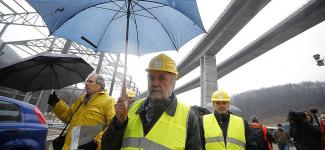 Mario Virano
Mario Virano
Environmentally compatible transport infrastructure
 Anette Solli
Anette Solli
Scandinavian 8 Million City
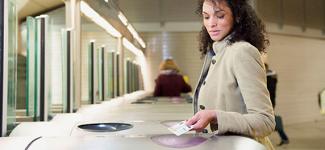 Will Judge
Will Judge
Connecting Cities: Global transit solutions
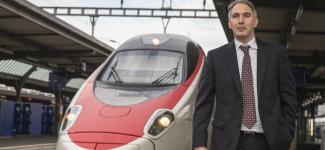 Jan C. Harder
Jan C. Harder
Visions for the Transportation systems in 2050
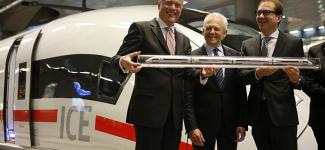 Jochen Eickholt
Jochen Eickholt
Integrated mobility for METR region
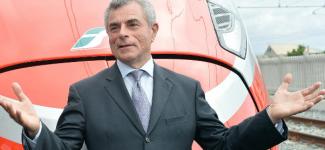 Mauro Moretti
Mauro Moretti
